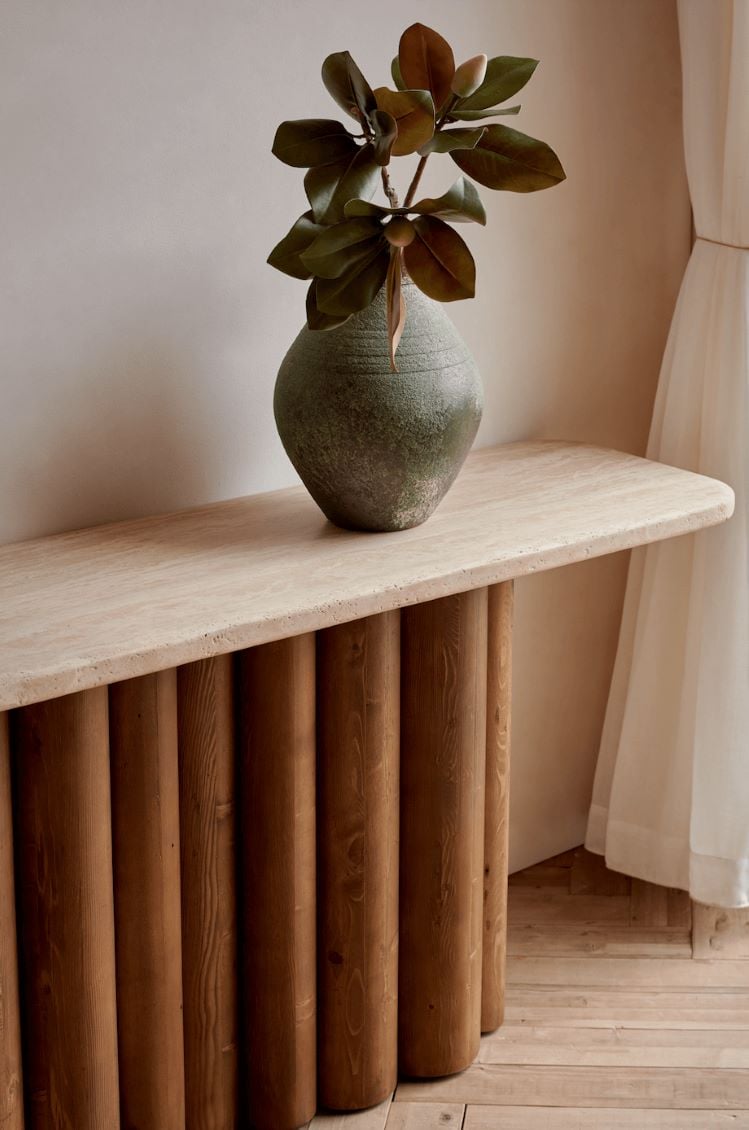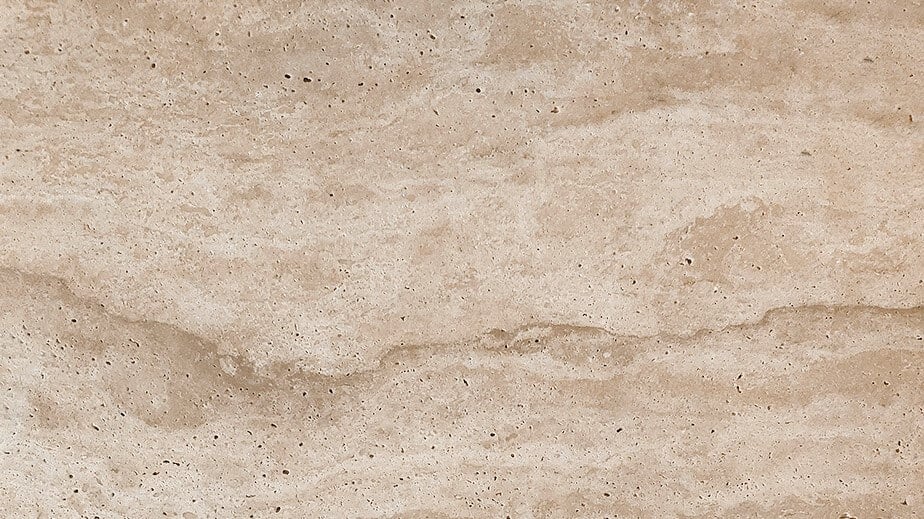

Every piece of stone has a story. They are nature’s paintings—it’s the nuanced characteristics mapping out a millennia-long journey of formation.
Travertine is a limestone, formed when material deposits around freshwater hot springs are exposed to extreme heat and pressure over time. During its formation, hot water and gas pass through the stone, giving travertine its distinctly porous appearance.
Our Galata Travertine is sourced from Turkey, a country renowned for producing extraordinary travertine for centuries due to its hot springs' unique heat and mineral content.
Instead of polishing the stone shiny smooth, Galata Travertine is lightly honed, preserving and celebrating its craggy character. Every piece of travertine has inherent color variation from sandy white to rose-tinted beige, pitting, and vein patterns—no two pieces will be exactly alike.
Jump to quick tips and care chart.
Q.
What if I spill something? How can I avoid stains?
Spills happen, but when they do, it's best to act quickly, especially given travertine's porous structure.
Wipe up spills quickly with a damp cloth to avoid staining. For tough stains like coffee, red wine, ketchup, or oil, wipe away any excess spill and sprinkle the affected area with a bit of baking soda. Let the baking soda sit for up to three minutes and wipe away the residue with a clean, dry cloth. Avoid using harsh or abrasive cleaners.

Q.
Does travertine scratch easily?
Travertine is a relatively dense, durable stone, and we fill the larger pits on its surface to make it less susceptible to damage. But remember how we said we hand-treat our Galata Travertine rather than sanding and polishing it smooth? This light sealing process preserves the stone's beautiful nuances but provides less protection than a heavier, lacquered finish. Nicks and scratches over time are par for the course.
To avoid an inordinate amount of scratching, take care when placing objects on the tabletop, especially if they're heavy or sharp.

Q.
How do I care for my Galata Travertine tabletop day-to-day?
Wipe the tabletop regularly with a clean, damp cloth and wipe up excess moisture with a dry one. Dusting often will prevent an excessive accumulation of dirt or crumbs in the pits on the stone's surface. You can also use a handheld vacuum or soft brush to remove dust or debris.
As with all natural materials, a little mindful care goes a long way in preventing damage, so avoid placing food or beverages directly on the tabletop whenever possible. Always use a coaster or trivet—especially near acidic foods like coffee, wine, and tomatoes.
Q.
Can I reseal my travertine tabletop?
We believe much of travertine's charm lies in its imperfections, including the subtle ways your home affects its aging process—it's part of owning an heirloom. While we don't necessarily recommend resealing the tabletop yourself, it's ultimately your call. If you do choose to reseal your tabletop, look for travertine or porous stone-specific sealants. And, as with any home treatment, it's always best to test it on an inconspicuous spot first to see how it affects the look and texture of the material.


Quick Tips
- Dust regularly or use a soft brush to prevent dirt or crumbs from settling in the small pits. You can also use a handheld vacuum or soft brush to remove dust or debris.
- Wipe regularly with a clean, damp cloth and wipe excess moisture with a dry cloth. Act quickly with spills and wipe using a clean, dry cloth to avoid staining.
- For tough stains, add a small dab of mild dishwashing liquid and avoid using harsh or abrasive cleaners.
- Avoid placing food or beverages directly on the tabletop and always use a coaster or trivet—especially near acidic foods like coffee, wine, and tomatoes.


